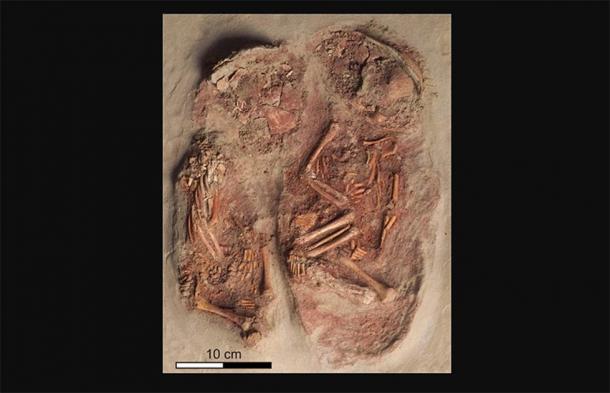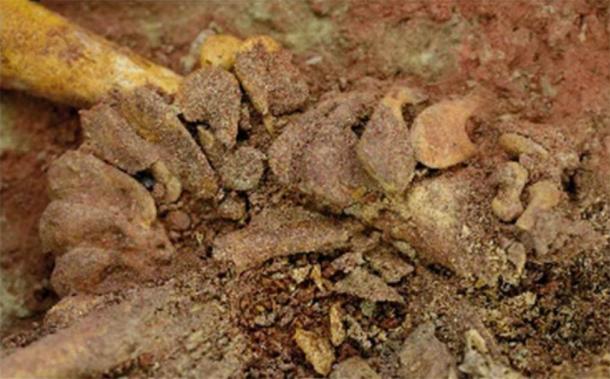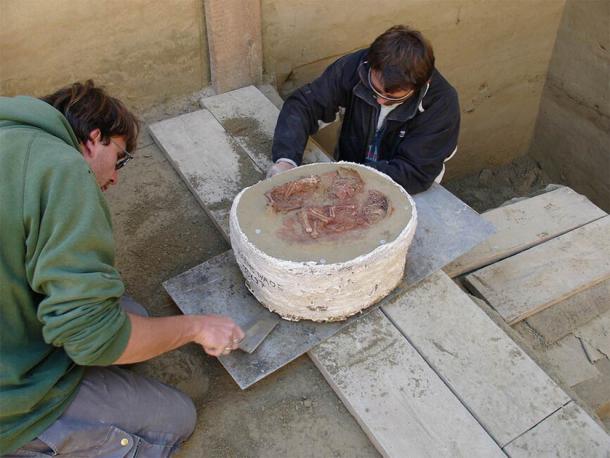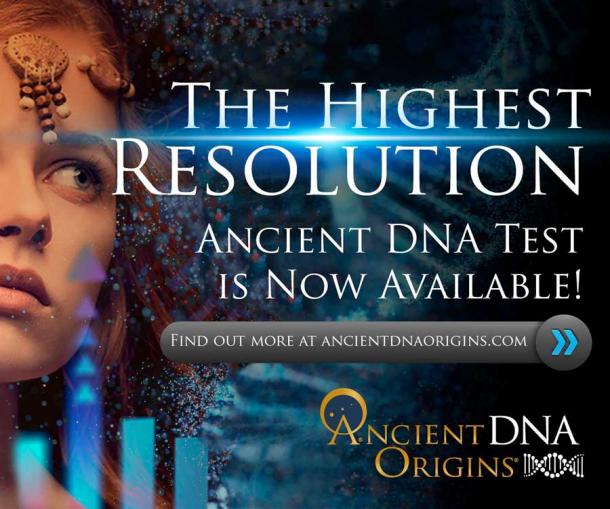
DNA Reveals Earliest Twins Buried 30,000 Years Ago in Austria
Thanks to news DNA analysis, prehistoric remains discovered in Austria have been found to contain the earliest evidence of twins found to date anywhere in the world. The discovery of infant remains from prehistory is rare, but to find twins is astonishing. The two male infants were found back in 2005 at the important archaeological site of Krems-Wachtberg in Austria, believed to be a Gravettian site. They were found with grave goods and near to another infant burial.
Below loess sediment, experts have found extensive evidence of a settlement of hunter-gatherers, that date back up to 40,000 years ago. Nature reports that in terms of “Upper Palaeolithic find spots, Krems-Wachtberg stands out due to exceptional preservation of organic materials and occupation structures.” Archaeologist digging here found an oval-shaped grave, in which they came across the remains of two infants.

Burial context and grave goods at the Krems-Wachtberg site in Austria. DNA evidence has now identified the infant burial to be of the earliest twin remains discovered to date. (Natural History Museum Vienna)
Earliest Twins Were Discovered with Grave Goods
The research team who made the discovery wrote in Nature that the infants were found “embedded in red ochre and they were placed next to each other in flexed positions facing east and with their skulls pointing north.” It is believed that the red ochre earth helped to preserve the remains. The Daily Mail reports that “the grave was not backfilled, but instead was covered with a mammoth’s shoulder blade that was molded to fit the opening.”
- 8,000-Year-Old Child Remains Discovered With No Limbs
- Twins, Kings and Horses: Symbols of the Divine Twins in Ancient Mythology
- The Sunghir Burial Site: Were these Two Children Sacrificed in a Form of Prehistoric Scapegoating?
Both of them had been buried with grave goods. The youngest had 53 exquisite beads made from Mammoth ivory, placed on his pelvis, that once formed part of a necklace. The older infant was found with shells and a fox’s tooth and these were part of some ornament. These grave goods could have been deposited with the dead for use in the afterlife or they were offerings to the gods. The presence of these artifacts may suggest some form of early religion or a belief in the supernatural.

Detail of Mammoth ivory beads and their arrangement on the pelvis of one of the infant twins discovered at the Krems-Wachtberg site in Austria. (OREA / Austrian Academy of Sciences)
Rare Discovery of Earliest Twins Confirmed Using DNA Analysis
To determine the sex, age, and relationship of the two infants, DNA was extracted from their craniums. The results of this DNA analysis were published this month in Nature. The team quickly established that they were both males. It was also found that they shared their entire genome and were therefore identical twins.
This is an amazing discovery, confirmed using a Morphometric assessment of the bones and also an analysis of their teeth found in these ancient infant burials. One died some six to seven months after birth. The Daily Mail states that “it was possible to gather a more precise age estimate by measuring enamel prism lengths with a CT scan” and by measuring the length of their bones.
This discovery of twins from the Palaeolithic era is a major discovery. Members of the research team wrote in Nature that “confirmed evidence of twins in the archaeological record is extremely rare and has never been verified by a DNA analysis.” This finding has now been concluded to be the earliest known evidence for twins in the archaeological record. Based on the evidence they lived around 30,000 years ago.

Block with the twin burial being excavated back in 2005 at the Krems-Wachtberg site in Austria. (OREA / Austrian Academy of Sciences)
30,000-Year-Old Twins Provide Insight into Hunter-Gatherer Society
The discovery of the twins is offering an insight into ancient hunter-gatherer society. It appears that the grave of the first twin to die was reopened and his brother placed alongside him. The researchers wrote in Nature that “our study shows that Gravettian mortuary behaviour can also include re-opening of a grave and modification/manipulation of its layout and content.”
The team also found the grave of another infant near that of the twin boys. This was no surprise, as in ancient societies the morality rate among newborns was very high. The child was determined to have died at about three months old and it was once swaddled by a cloth that was probably tied together with a pin. The Daily Mail quotes the researchers as saying that “the third infant who had been deposited in the second grave turned out to be their third-degree relative.” In other words, the baby found in the single grave was the cousin of the twins.
The researchers wrote in Nature that the discovery of the infant burials “are of paramount importance given the rarity of immature human remains from this time.” Also, because they were found in their original context this can illuminate prehistoric beliefs and practices. These infant burials can help us to understand Palaeolithic society and its people.
Top image: Thanks to new DNA analysis, the Krems-Wachtberg infants discovered in 2005 have now been identified as the earliest twins discovered to date. Source: OREA / Austrian Academy of Sciences
By Ed Whelan

















Comments
Neanderthal or what?